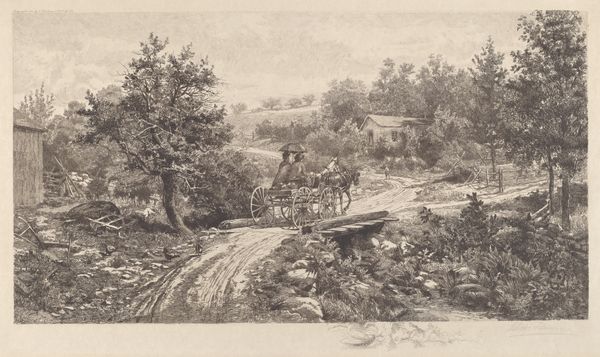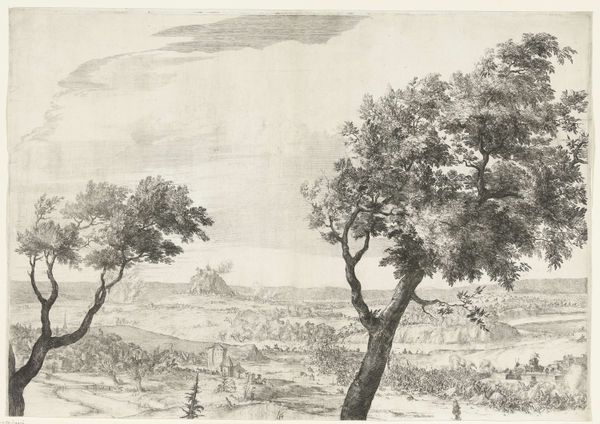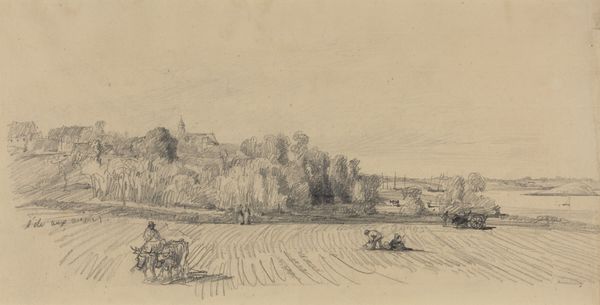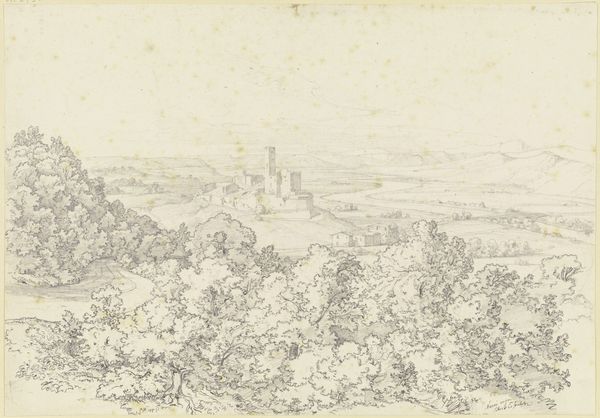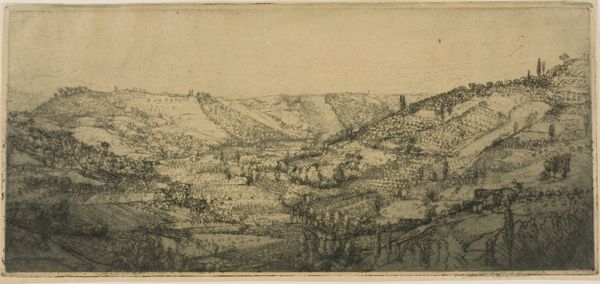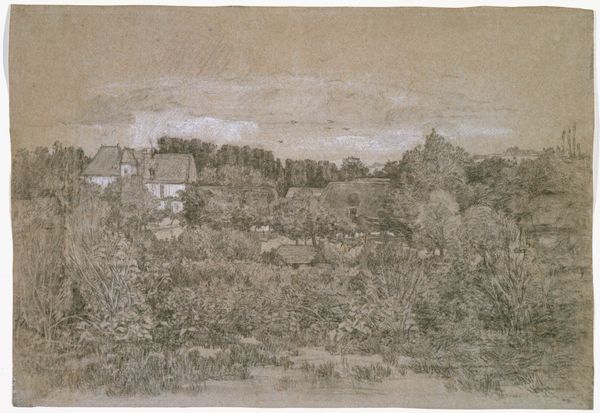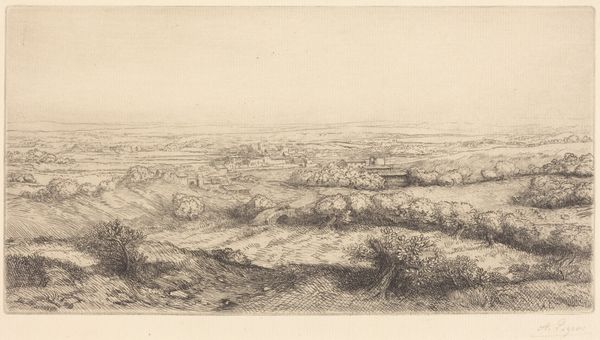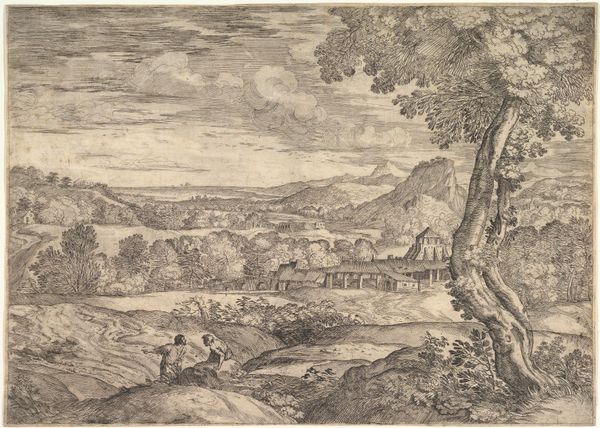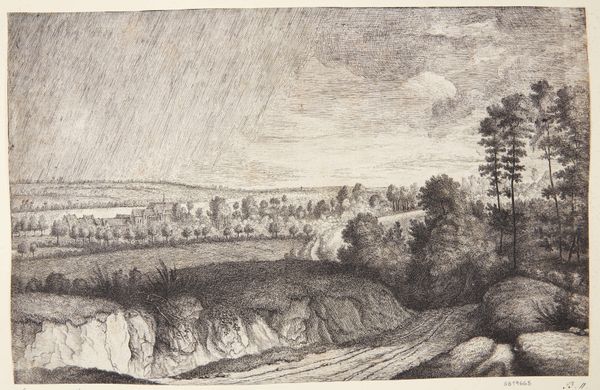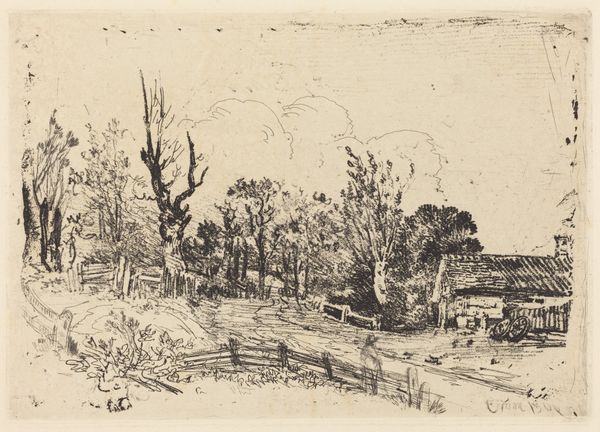
Dimensions: support: 1537 x 2134 mm
Copyright: CC-BY-NC-ND 4.0 DEED, Photo: Tate
Curator: Cecil Lawson's "The Hop-Gardens of England" presents a vast landscape in oil on canvas. The Tate holds this impressive artwork, though we don't have an exact creation date. Editor: It feels so expansive, almost melancholic. The muted greens and browns give it a subdued, rural atmosphere. You can almost smell the earth. Curator: Lawson was quite interested in depicting the lives of rural laborers and the changing English landscape. Hop farming was an important industry, shaping both the economy and social fabric of certain regions. This painting might reflect both the beauty and the hardships associated with such labor. Editor: I wonder about the gendered aspects of this work. Who did this kind of labor? Were women involved? How might their contributions be rendered visible within a contemporary reading? Curator: Those are important questions, and Lawson's perspective, viewed through a modern lens, certainly has limitations. Still, the painting offers a window into a specific moment in British agricultural history and the aesthetic values of its time. Editor: It does make you think about our relationship with the land and the people who work it, even now. Curator: Indeed, a poignant and relevant consideration even today.
Comments
tate 7 months ago
⋮
http://www.tate.org.uk/art/artworks/lawson-the-hop-gardens-of-england-t13443
Join the conversation
Join millions of artists and users on Artera today and experience the ultimate creative platform.
tate 7 months ago
⋮
During his short career Cecil Lawson was regarded as the leader of a poetic mode of landscape painting in Britain. This panorama was painted on location in Wrotham in Kent hop country. The warped perspective and thick, bold brushwork were unusual for the time which may explain why the picture was rejected by the Royal Academy in 1875. It was accepted the following year and went on to be ranked as the most important of the artist’s works. Gallery label, October 2013
